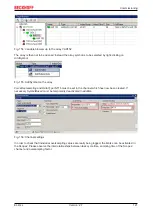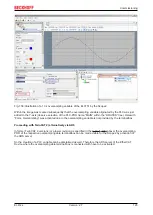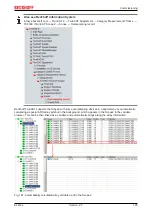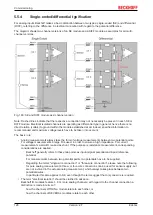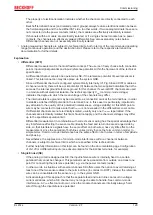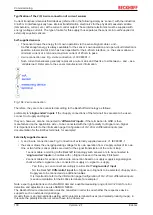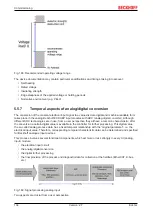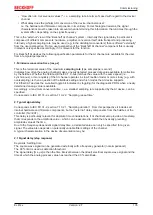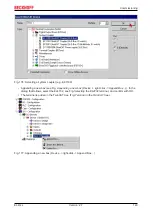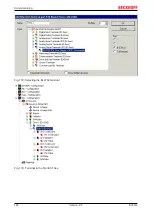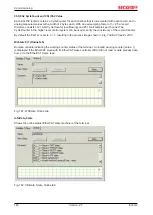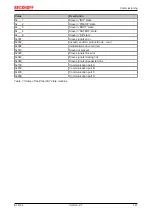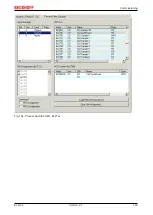
Commissioning
EL47xx
135
Version: 2.7
• “How often do I receive new values?”, i.e. a sampling rate in terms of speed with regard to the device/
channel
• What delay does the (whole) AD conversion of the device/channel cause?
I.e. the hardware and firmware components in its entirety. For technological reasons, the signal
characteristics must be taken into account when determining this information: the run times through the
system differ, depending on the signal frequency.
This is the “external” view of the “Beckhoff AI channel” system – internally the signal delay in particular is
composed of different components: hardware, amplifier, conversion itself, data transport and processing.
Internally a higher sampling rate may be used (e.g. in the deltaSigma converters) than is offered “externally”
from the user perspective. From a user perspective of the “Beckhoff AI channel” component this is usually
irrelevant or is specified accordingly, if it is relevant for the function.
For Beckhoff AI devices the following specification parameters for the AI channel are available for the user
from a temporal perspective:
1. Minimum conversion time [ms, µs]
This is the reciprocal value of the maximum
sampling rate
[sps, samples per second]:
Indicates how often the analog channel makes a newly detected process data value available for collection
by the fieldbus. Whether the fieldbus (EtherCAT, K-bus) fetches the value with the same speed (i.e.
synchronous), or more quickly (if the AI channel operates in slow FreeRun mode) or more slowly (e.g. with
oversampling), is then a question of the fieldbus setting and which modes the AI device supports.
For EtherCAT devices the so-called toggle bit indicates (by toggling) for the diagnostic PDOs when a newly
determined analog value is available.
Accordingly, a maximum conversion time, i.e. a smallest sampling rate supported by the AI device, can be
specified.
Corresponds to IEC 61131-2, section 7.10.2 2, “Sampling repeat time”
2. Typical signal delay
Corresponds to IEC 61131-2, section 7.10.2 1, “Sampling duration”. From this perspective it includes all
internal hardware and firmware components, but not “external” delay components from the fieldbus or the
controller (TwinCAT).
This delay is particularly relevant for absolute time considerations, if AI channels also provide a time stamp
that corresponds to the amplitude value – which can be assumed to match the physically prevailing
amplitude value at the time.
Due to the frequency-dependent signal delay time, a dedicated value can only be specified for a given
signal. The value also depends on potentially variable filter settings of the channel.
A typical characterization in the device documentation may be:
2.1 Signal delay (step response)
Keywords: Settling time
The square wave signal can be generated externally with a frequency generator (note impedance!)
The 90 % limit is used as detection threshold.
The signal delay [ms, µs] is then the time interval between the (ideal) electrical square wave signal and the
time at which the analog process value has reached the 90 % amplitude.
Summary of Contents for EL47 Series
Page 1: ...Documentation EL47xx Analog output terminal with oversampling 2 7 2020 02 27 Version Date...
Page 2: ......
Page 33: ...Mounting and wiring EL47xx 33 Version 2 7 Fig 23 Other installation positions...
Page 70: ...Commissioning EL47xx 70 Version 2 7 Fig 73 Incorrect driver settings for the Ethernet port...
Page 149: ...Commissioning EL47xx 149 Version 2 7 Fig 184 Process data tab SM1 EL47xx...

